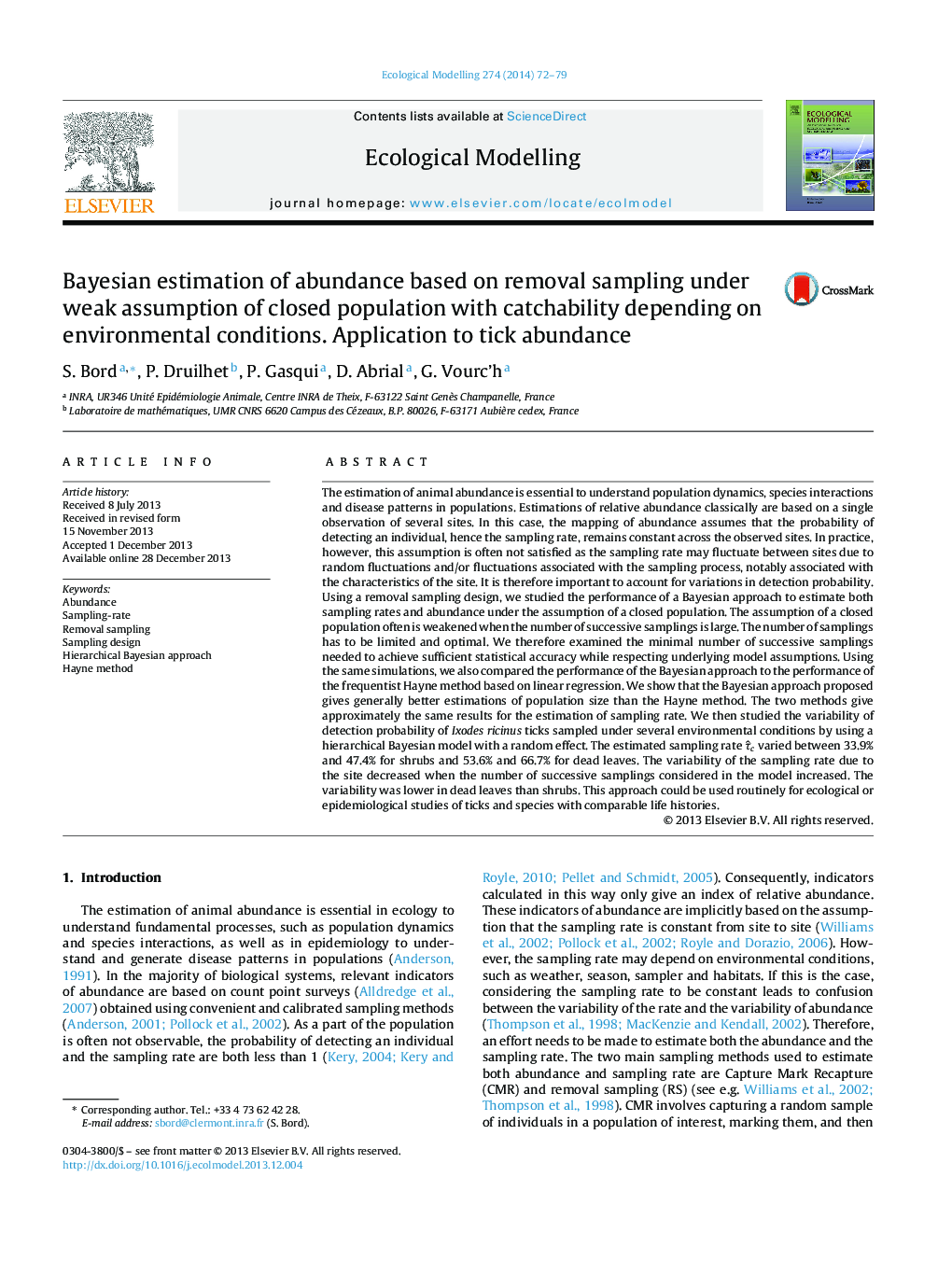| کد مقاله | کد نشریه | سال انتشار | مقاله انگلیسی | نسخه تمام متن |
|---|---|---|---|---|
| 6296974 | 1617472 | 2014 | 8 صفحه PDF | دانلود رایگان |
عنوان انگلیسی مقاله ISI
Bayesian estimation of abundance based on removal sampling under weak assumption of closed population with catchability depending on environmental conditions. Application to tick abundance
ترجمه فارسی عنوان
برآورد فراوانی بیزی بر اساس نمونه گیری حذف شده با فرض ضعیف جمعیت بسته با توجه به شرایط محیطی. درخواست برای تکرار فراوانی
دانلود مقاله + سفارش ترجمه
دانلود مقاله ISI انگلیسی
رایگان برای ایرانیان
کلمات کلیدی
فراوانی، نرخ نمونهبرداری، نمونه برداری، طرح نمونه برداری، رویکرد باینری سلسله مراتبی، روش هین،
موضوعات مرتبط
علوم زیستی و بیوفناوری
علوم کشاورزی و بیولوژیک
بوم شناسی، تکامل، رفتار و سامانه شناسی
چکیده انگلیسی
The estimation of animal abundance is essential to understand population dynamics, species interactions and disease patterns in populations. Estimations of relative abundance classically are based on a single observation of several sites. In this case, the mapping of abundance assumes that the probability of detecting an individual, hence the sampling rate, remains constant across the observed sites. In practice, however, this assumption is often not satisfied as the sampling rate may fluctuate between sites due to random fluctuations and/or fluctuations associated with the sampling process, notably associated with the characteristics of the site. It is therefore important to account for variations in detection probability. Using a removal sampling design, we studied the performance of a Bayesian approach to estimate both sampling rates and abundance under the assumption of a closed population. The assumption of a closed population often is weakened when the number of successive samplings is large. The number of samplings has to be limited and optimal. We therefore examined the minimal number of successive samplings needed to achieve sufficient statistical accuracy while respecting underlying model assumptions. Using the same simulations, we also compared the performance of the Bayesian approach to the performance of the frequentist Hayne method based on linear regression. We show that the Bayesian approach proposed gives generally better estimations of population size than the Hayne method. The two methods give approximately the same results for the estimation of sampling rate. We then studied the variability of detection probability of Ixodes ricinus ticks sampled under several environmental conditions by using a hierarchical Bayesian model with a random effect. The estimated sampling rate ÏËc varied between 33.9% and 47.4% for shrubs and 53.6% and 66.7% for dead leaves. The variability of the sampling rate due to the site decreased when the number of successive samplings considered in the model increased. The variability was lower in dead leaves than shrubs. This approach could be used routinely for ecological or epidemiological studies of ticks and species with comparable life histories.
ناشر
Database: Elsevier - ScienceDirect (ساینس دایرکت)
Journal: Ecological Modelling - Volume 274, 24 February 2014, Pages 72-79
Journal: Ecological Modelling - Volume 274, 24 February 2014, Pages 72-79
نویسندگان
S. Bord, P. Druilhet, P. Gasqui, D. Abrial, G. Vourc'h,
